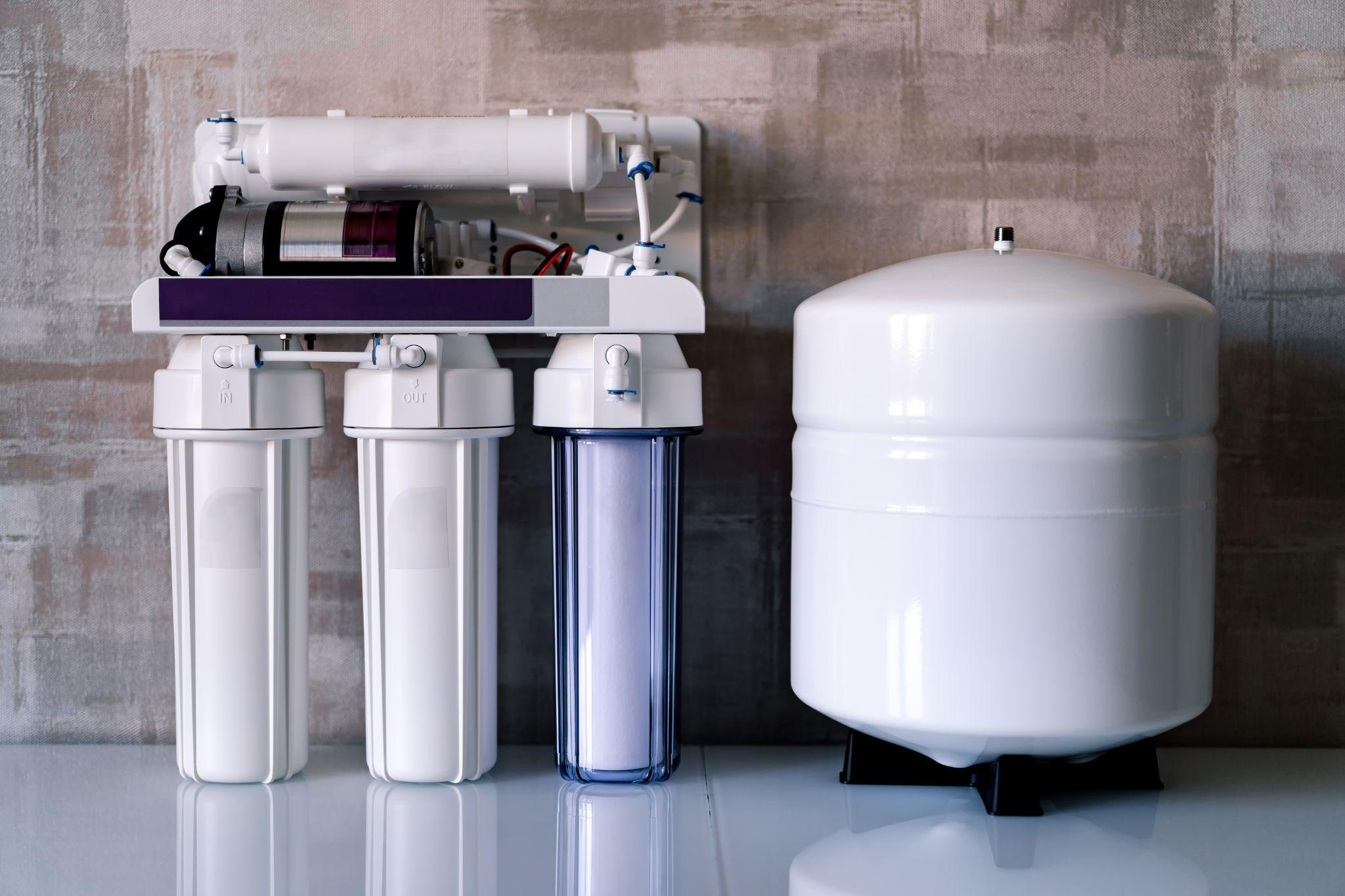A Guide to Reverse Osmosis Water Filtration Systems

When you want to improve the quality of your drinking water, you have a few different options. You could have your plumber install a whole-house filtration system or a reverse osmosis water filter system in specific locations in your home.
What Is a Reverse Osmosis Water System?
A reverse osmosis water system is a type of water purification system that purifies drinking water. Unlike a whole-house filtration system, only the faucets connected to the RO plumbing will receive the purified water.
What Is the Difference Between a Filtration System and a Purification System?
Water filtration is where water is fed through one or more filters to remove impurities from the water. Impurities often consist of calcium and heavy metals when you have hard water. They can also remove chlorine and other chemicals when you have city water.
Water purification also filters the water but has added benefits. They can remove all types of impurities, pollutants, VOCs (volatile organic compounds), viruses, and bacteria.
Do I Need an RO System if I Have a Whole-House Filtration System?
Most people with a whole-house filtration system will still consider reverse osmosis system installation. Since the system is only installed under specific sinks in the home, it can be beneficial to have purified water for drinking and cooking.
On the other hand, if you do not require whole-house filtration, reverse osmosis water filter systems can be installed in just those locations where you want purified water.
How Does Reverse Osmosis Work?
It is essential to remember there are different systems with various options. In general, the system will process the water through a series of filters and a RO membrane, as follows:
- The water passes through a sediment filter to remove sediment.
- Next, the water passes through a carbon filter to start the water purification process.
- Then the water passes through the RO membrane, removing any remaining impurities. These impurities are flushed out a drain line while the filtered and purified water continues through the system.
- Next, the water moves through a deionization filter, removing any remaining pollutants.
More advanced systems can have two additional steps where the water moves through a chamber exposed to UV light that kills bacteria and viruses. Last, it moves through a second carbon filter to remove any odors or funny tastes to deliver the purest water for drinking and cooking.
Most in-home reverse osmosis plumbing lines are connected to a storage tank that holds RO water until it is required. Once the storage tank is full, the RO system shuts off until the water level drops to a preset amount.
What Are the Benefits of a Reverse Osmosis System?

The primary benefits your home gains when you have a reverse osmosis system include:
- Improved Tasting Water
- Odor-Free and Mineral-Free Water
- Impurities and Contaminants Removed
- Safe Water for Drinking and Cooking Ensured
- Most Sodium from the Water Removed
In addition, you do not have to worry about wasting money on bottled water, water filter pitchers, and other such products. Furthermore, a RO system is eco-friendly because you are not using tons of plastic bottles that end up in landfills.
Another benefit of investing in a reverse osmosis system for your home is it can reduce plumbing repairs. Since it purifies the water, the water from the faucet is mineral- and contaminant-free. As a result, faucet aerators and screens do not get clogged, and you do not develop leaking faucets as quickly.
Choosing the Right RO System for Your House
The first step is to have your plumber test your water quality to find out exactly what is in it. Once you know what it contains, you can decide what type of filtration system you want for your home.
For example, installing a water softener would be recommended if you have hard water. Next, if you want to filter all the water coming into the house, you need a whole-house solution. Then you could have individual RO systems installed underneath the sinks where you want purified water.
On the other hand, if you have city water and want purified water for drinking and cooking, a single system in the kitchen would be appropriate. Once you decide what type of system you need, the next step is to determine what level of filtration and purification you would like. Most people invest in a 4-stage or 5-stage RO system because it provides the best quality water.
Benefits of Professional Reverse Osmosis System Installation
Reverse osmosis system installation is not an easy DIY project. You also need to ensure the system is installed correctly and according to current building and plumbing codes. Therefore, this is a job best left to a qualified plumber.
Your plumber will also be able to ensure that the component and parts needed for the system will fit correctly in the space under the sink and still allow for some storage. Additionally, most plumbing companies offer maintenance programs where the plumber performs maintenance and changes the filters every six or twelve months.
Get an RO System Installed Today
If you have further questions about RO systems, what type of filtration systems would be best for your home, or want a free estimate, please contact Christianson Air Conditioning & Plumbing at 512-246-5400. We also can perform maintenance and repairs on existing water filtration and RO systems already installed in your San Antonio or Austin Metro area home.
Tags: Reverse Osmosis Plumbing, Reverse Osmosis System Installation, What Is a Reverse Osmosis Water System?



Sorry, comments for this entry are closed at this time.